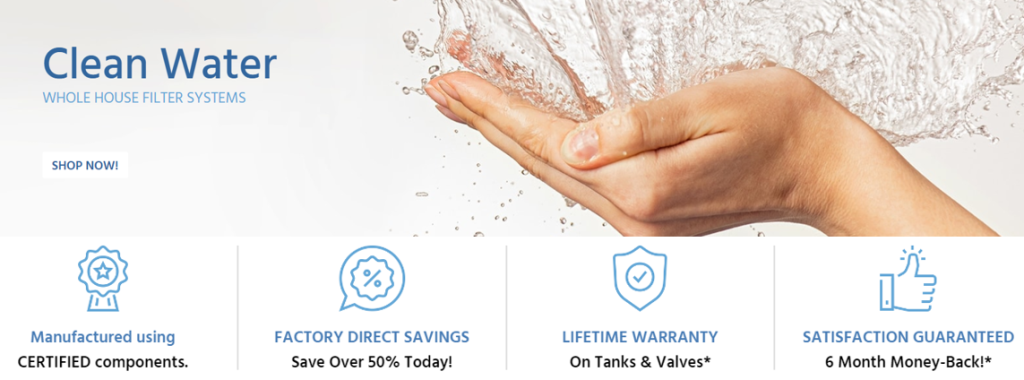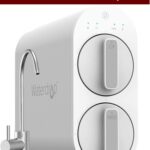Water softener removes chlorine by replacing it with sodium ions.
Water softeners are devices that remove hardness minerals from water. Hard water contains high levels of calcium and magnesium, which can cause scale buildup on fixtures and appliances and leave spots on dishes and clothing. A water softener removes these minerals by exchanging them with sodium or potassium ions. This process is called ion exchange.
Ion exchange is a water treatment process in which unwanted minerals are exchanged for more desirable minerals. In the case of water softeners, the unwanted minerals are calcium and magnesium, and the more desirable minerals are sodium or potassium.
The ion exchange process begins when water passes through the softener’s resin bed. The resin is made up of tiny beads that are coated with sodium or potassium ions. As the water comes into contact with the beads, the calcium and magnesium ions are attracted to the beads and exchanged for sodium or potassium ions.
The water that leaves the softener’s resin bed is now soft water. It contains sodium or potassium ions in place of the calcium and magnesium ions. The softened water is then passed on to the home’s plumbing system.
Install a Home Water Filter & Get "Unlimited Safe Drinking Water" For Decades
Get Upto 55% Discount With a Lifetime Warranty & 6-Months Money Back Guarantee Free Shipping
SpringWell Water Filtration Systems: 100% American-Made & NSF Certified Water Filters and Water Softeners
Water softeners are an effective way to remove hardness minerals from water. The ion exchange process exchanges the unwanted minerals for more desirable minerals, leaving the water soft and free of spots and scale buildup.
What Is A Water Softener?
A water softener is a device that is used to remove dissolved minerals from water.

What is a water softener?
A water softener is a device that is used to remove magnesium and calcium ions from hard water. This makes the water softer and easier to lather. Water softeners are often used in homes and businesses to improve the quality of water.
There are many different types of water softeners on the market. The most common type is the ion-exchange water softener. This type of softener works by exchanging the magnesium and calcium ions in hard water for sodium ions.
Ion-exchange water softeners are very effective at removing magnesium and calcium ions from water. However, they can be expensive to operate and require a lot of maintenance.
Another type of water softener is the reverse osmosis water softener. This type of softener works by passing hard water through a semi-permeable membrane. The membrane only allows water molecules to pass through, while rejecting the magnesium and calcium ions.
Reverse osmosis water softeners are very effective at removing magnesium and calcium ions from water. However, they can be expensive to operate and require a lot of maintenance.
One of the most popular types of water softeners is the salt-free water softener. This type of softener works by using a process called chelation to bind the magnesium and calcium ions in hard water. This prevents the ions from being able to attach to surfaces and form scale.
Salt-free water softeners are very effective at preventing the formation of scale. However, they are not as effective at removing existing scale.
Water softeners are an important part of many homes and businesses. They help to improve the quality of water and make it easier to use.
How Does A Water Softener Work?
A water softener is a device that is used to remove hard water minerals from water.
A water softener is a device that is used to remove hardness from water by exchanging hardness ions with sodium or potassium ions. Hard water contains high levels of calcium and magnesium, which can cause scale buildup on pipes and fixtures and cause soap to not lather properly. A water softener exchanges these ions with sodium or potassium ions, which do not cause these problems.
Water softeners can be used in residential, commercial, and industrial settings. They are usually installed where the water enters the home or building. Water softeners work by passing the water through a bed of ion exchange resin beads. These beads are coated with sodium or potassium ions. As the water passes through the beads, the calcium and magnesium ions are exchanged for the sodium or potassium ions. The water that comes out of the water softener is now considered “softened” because it no longer has the hardness-causing calcium and magnesium ions.
Water softeners are regenerated on a regular basis. This is when the beads are flushed with a high concentration of sodium or potassium ions to replace the calcium and magnesium ions that have been removed from the water. The regeneration process can be done manually or automatically.
Water softeners are an important part of many homes and businesses. They help to prolong the life of pipes and fixtures and prevent soap buildup. If you have hard water, a water softener can make a big difference in the quality of your water.
FAQ
How Does A Water Softener Remove Chlorine?
What Are The Benefits Of Using A Water Softener?
Conclusion
Water softener removes chlorine by breaking the bond between the water molecules and the chlorine molecules. This process is called ion exchange and it is what allows water softeners to remove hard water minerals and impurities.
Hopefully, you are clear on how water softeners remove chlorine now. If you still have any questions, feel free to comment below.


